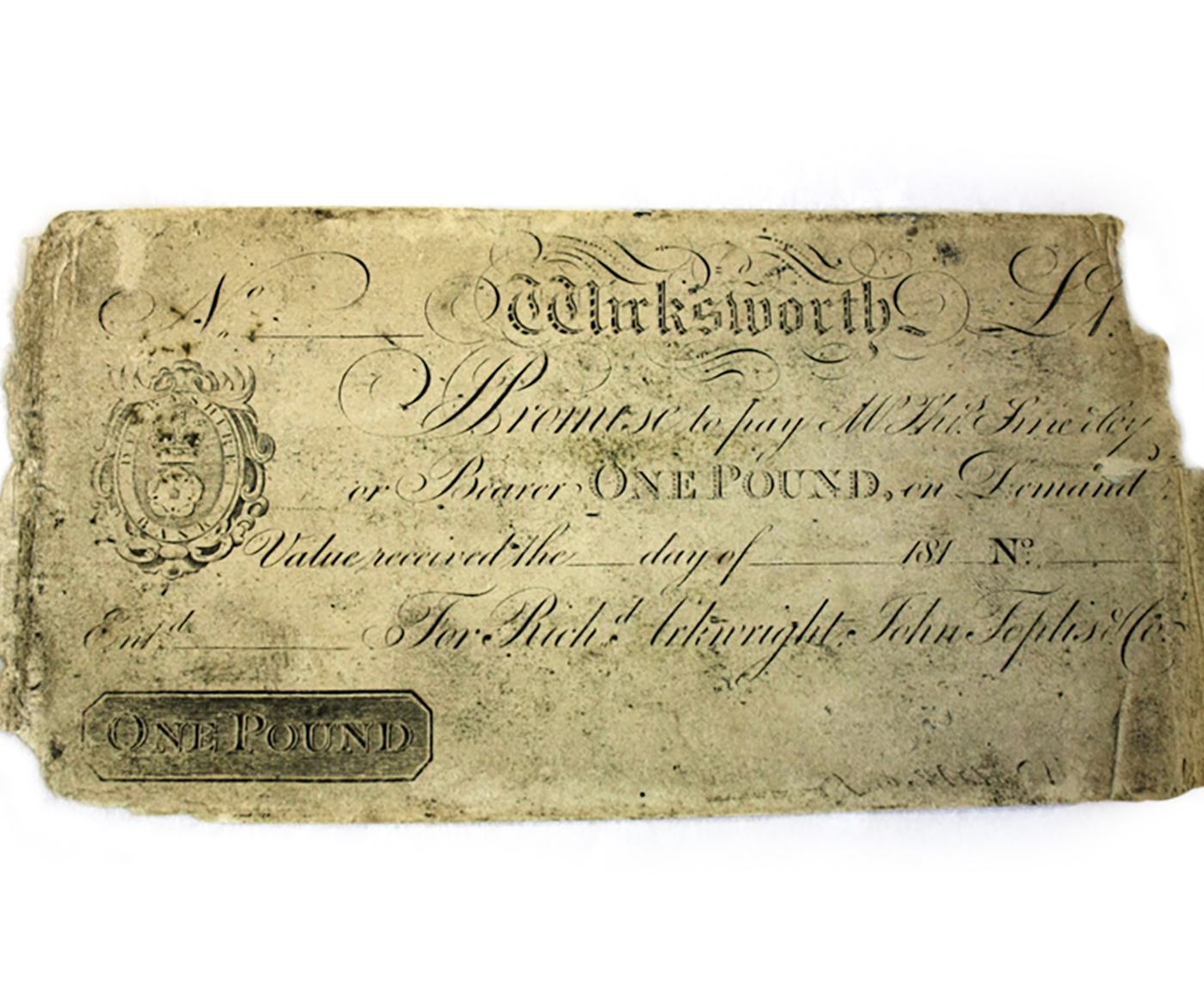Pre-1792, British banknotes were printed from hand-engraved copperplates. In 1706, Sir Isaac Newton pointed out to the Treasury that ‘good graving is the best security…’, at the time, he was talking in support of medal engravers at the Royal Mint, but the same could be said some 100 years later of techniques required for security printing of banknotes, the design of which owe their early origins to the engravers who had the skill to engrave extremely intricate, figurative work, patterns and lettering onto copper printing plates.
The relative simplicity of early British banknotes notes meant that forgeries soon became problematic. The penalty for forgery or even unknowingly having them in your possession was severe - the sentence commonly being death by hanging or transportation.
The identical reproduction of banknotes was essential in preventing this crime. At the beginning of the 19th century, banks were plagued with forgeries and preventative measures such as frequently engraving new designs, took time to develop and in the interim period, forgers seized the opportunity to release banknotes that could go easily undetected. As the number of private banks increased, so too did the concern in improving anti-forgery procedures.
While the skill of hand engravers produced high-quality replicas, the softness and wear of copper meant constant re-engraving. In 1792, Jacob Perkins, of printers Perkins, Fairman and Heath, invented a new security printing technique, called ‘siderography’, the production of printing plates of hard-wearing steel, rather than copper. This allowed unlimited reproduction of intricate printed designs, overtaking laborious repeated engraving on copper on each occasion a new plate was required.
The world’s first steel-printed advertising banknote. Advertising for the prevention of forgery.
Today, Tony Maidment is the only active freelance banknote engraver in the UK; with over 30 years of experience, he began engraving age 16 and engraved his first banknote age 18, a Malaysian one dollar bill.
In an interview with The Creative Review, he said “the work of the hand engraver – the human touch, if you like – is still one of the most vital components in the design of banknotes and remains an integral element in combating forgeries. The nuances of the lines and dots that an engraver makes will be unique to each artist, and thus much harder to replicate than the more uniform shapes drawn on-screen. In currency design, so the theory goes, bank-notes need to be easy to use, but hard to counterfeit. To see a really beautiful hand engraving, you cannot compare it. It’s such a shame that the art form could be lost without anyone really noticing. Money is the most handled, most visible type of art in the world,” he says. “But ours is not a lost art, it’s just hidden.”


